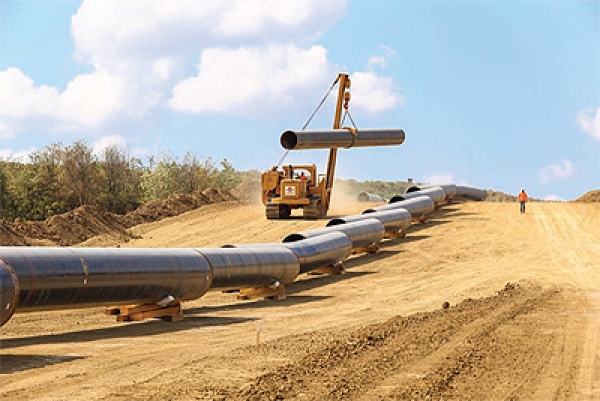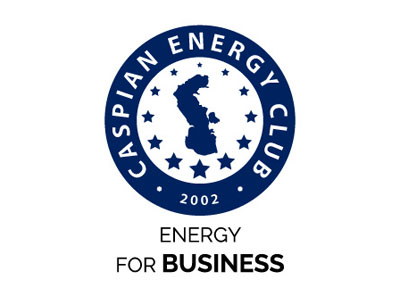|
|
In one word, a revolutionary technological breakthrough did not happen, which does not call off the gradual evolutionary breakthrough that should result in the abandonment of harmful internal combustion engines in most EU countries from 2030 and dial back the degree of heat within the planet’s atmosphere in accordance with the climate goals of the Paris summit. Also, the new US administration has already joined the Paris Climate Agreement. It probably will accelerate the development of renewable energy sources in 2021. The goal is to fully decarbonize the electricity sector by 2035. But much has already been accomplished in the past year.
So in 2020, the number of clean energy production facilities doubled in China. In the near future, the country expects record growth in this industry. In September, the President of the People’s Republic of China, Xi Jinping announced that China would completely stop carbon emissions by 2060.
In 2020, the volume of electricity generated by solar farms in Spain was 60% more than in 2019. The southern country has the largest solar potential in all of Europe. For now, Spain is noticeably yielding to Germany, the European Union leader in the use of solar capacities.
According to the environmental group Ember, about 40% of electricity in the European Union was produced from renewable sources in the first half of 2020. Power plants burning fossil fuels accounted for just 34%.
Last year was the most “eco-friendly” for the power system of Great Britain since the industrial revolution. The country went along without coal for 67 days. By 2025, Britain plans to completely abandon polluting fuels, as the share of energy coming from wind farms becomes larger.
However, if we take the indicators of consumption of fossil energy resources and gas for 10 years, we can see that without the 2020 covid crisis year they increased by 13% and 25% respectively.
In Europe, 75% of total industrial consumption falls to the share of oil, gas and coal. At the same time, almost a billion people in the world do not have access to electricity at all, and 2.5 billion out of 7.8 billion inhabitants of the blue planet cook food on an open fire, it is these groups of the population that are meant to be the main driver of the growth in demand for environmentally friendly resources and, first of all, for natural gas as the world economy grows.
That is why it is so important to maintain stable economic growth on the planet and prevent the reoccurrence of 2020 when the imposed force majeure dramatically plunged everyone into a future without hydrocarbons. No planes were flying, and many cars were parked. The unprecedented winter cold with rolling power cuts, freezing regions and cities in the United States, Europe and the Middle East, when people were forced to warm up in cars with the engines running, showed that it is a little early to live without oil and especially gas. Natural gas, especially its liquefied fraction, continues to prove its economic viability in relation to oil, and despite a 4% reduction in consumption through 2020 due to the coronavirus pandemic, gas has proved to be more stress-resistant to external shocks compared to the oil market. Yet the year of 2020 has brought a record decline in natural gas demand throughout the whole history.
Experts expect the demand to recover pretty soon. Early in 2021 global gas consumption will return to pre-crisis levels, and the growth of demand for natural gas in 2021 will make 2.8 percent. In this respect, the demand for ecological types of fuel will be driven by the increasing need for LNG. With increasing sources of supply, gas hubs of regional and international importance, it will lead to the untying from oil prices followed by the natural replacement of oil with liquid fractions of natural gas and alternative energy.
Despite the forecasts, the uncertainty amid the pandemic still makes this market vulnerable and suffering for new stable sources of supply, renewed demand stimulation and the formation of flexible LNG spot hubs.
Major event of 2021
Perhaps, the main event of this year happened right at the beginning of it. The glass of champagne with natural and the most famous, to this date, environmentally friendly fossil fuel (found in three types – gaseous, liquid and solid) was officially raised on December 31 when the Southern Gas Corridor was put into operation - the result of long negotiations for 15 years. This is a new, unique, and most importantly, additional source of clean energy for the European and Asian markets. The gas through the TANAP pipeline was delivered via an interconnector to Greece and Bulgaria, and after passing through these two countries, it reached Italy at the interconnector point. For the first time in history, the five Caspian littoral countries were able to access the new export system, and for the first time, Caspian natural gas was transported to the European market via pipelines. Following the successful TAP connection to the Italian gas distribution network, commercial natural gas was delivered from Melendugno in Italy and from Nea Mesimvria to Greece and Bulgaria on 15 November.
The Southern Gas Corridor for the first time connected the old continent to the Caspian Sea via Turkey and the Balkans, it is a historic day for the gas sector, said Gilberto Dialluce, Director General of the Italian Ministry of Economic Development for Infrastructure and Energy Systems. The flow volume is about 11 million cubic meters per day. In January, 340 million cubic meters of gas were imported to Italy through TAP, of which about 70 million cubic meters were exported in the form of reverse flow at the interconnector point.
As President of Azerbaijan Ilham Aliyev noted at the VII meeting of the Southern Gas Corridor Advisory Council, “Looking at the Southern Gas Corridor project, one can see that it is really unique by many parameters. Its length makes 3,500 kilometers, the project unites 7 countries. Without close cooperation between these countries, this project wouldn’t have been possible to implement. It crosses very difficult terrain like 2,500 m high mountains, and more than 100 km of the pipeline goes under the Adriatic Sea. The Southern Gas Corridor is complying with the highest ecological norms. And that was one of the major pre-conditions while we were planning and implementing this project”, Ilham Aliyev said. The project will be fully commissioned in 2026.
Notwithstanding the statistics of spending increase in all projects of this scale as they develop, the cost of this project was originally estimated at $44.6 billion. However, effective management and proper planning made it possible to lower the project cost to 33 billion dollars. Azerbaijan has made a significant financial contribution to the project in the amount of $10 billion. The annual event, held in Baku on February 11 in video format, was attended by 18 countries, 19 companies and 5 leading international financial institutions.
In addition to Shah Deniz field with reserves of over 1 trillion cubic meters, Azerbaijan has new resources - Babek field with gas reserves of 400 billion cubic meters. Absheron gas condensate field has reserves of 350 billion cubic meters. Another field is Umid, where natural gas reserves reach at least 200 billion cubic meters. Apart from this, the gas reserves in the deep water part of the sector exceed 1 trillion cubic meters, according to preliminary estimates.
The completion of TAP creates an opportunity for the construction of the Ionian-Adriatic pipeline, President of Azerbaijan said. “We have already signed memorandums of understanding with the Western Balkan countries. After the implementation of the Ionian-Adriatic Pipeline project, we will be able to diversify our supply routes and create new opportunities for the Western Balkan states as well”.
In total, the proven reserves of natural gas amount to 2.6 trillion cubic meters, and according to new data, this volume may be even larger, given the project called “deep-sea gas” at the Azeri-Chirag-Guneshli field.
Seasonal demand and LNG
In January 2021, the spot price of gas in Europe continued to rise, and the European gas industry went into a stressful mode of operation due to the extreme cold.
The price of gas at the Dutch TTF hub (a day-ahead contract) rose to $258 per thousand cubic meters after the previous peak of $253.5 with delivery on January 5. It has been the maximum figure since January 25, 2019.
The beginning of 2021 in Europe turned out to be much colder than 2020 and the three previous quite warm winters. The temperature collapse reoccurred in February as well. France began to actively buy gas in 2021 against the backdrop of frosts that hit Europe. Blue fuel exports to this country have increased almost 1.5 times since the beginning of 2021.
“The demand for natural gas in Europe continues to grow against the background of a cold, frosty winter, and the occupancy of European underground storage facilities continues to decrease”, major Russian exporter ‘Gazprom’ said. Fuel reserves in underground gas storage facilities (UGS) in France fell below 30 percent, according to data from Gas Infrastructure Europe. According to the information as of February 15, fuel reserves in Germany, Austria, Czech Republic and Poland fell to 34.17%, 45.28%, 41.08% and 52.27% respectively.
Earlier it became known that due to the cold winter, Germany from February 1 to February 10 increased the purchase of Russian gas by almost 50 percent compared to the same period in 2020.
Germany (plus 32.4 %), Italy (221.5 %), Turkey (20.8 %), France (77.3 %), the Netherlands (plus 21.2 %) and Poland (plus 89.9 %) increased purchases in January. The cold weather is likely to push the development of the LNG market in Europe, where the active phase of construction of 30 planned new liquefaction facilities and floating terminals will start. Besides, gas hub projects will be initiated in Turkey, the Eastern Mediterranean region and Greece.
“The global LNG market has been developing quite actively in recent years. In the last 6 years alone, production has grown by 55%, from 244 million to 378 million tons / year. Based on the current investment projects, it can be expected that by 2025, global capacity will increase by another 20%», Head of the Center for Economic Expertise at the NRU HSE, Marcel Salikhov counted for ‘Izvestiya’. According to him, Russia is a major player in this market. Qatar has long been the largest LNG producer, but Australia has almost caught up with the Middle East emirate, Marcel Salikhov from NRU HSE says.
“Qatar has long maintained a passive strategy and has not invested in expansion of production. For the last ten years, Qatar’s LNG production capacities stay at 77-78 million tons per year, despite the fact that gas reserves (North Pars field) make it possible to increase gas and LNG production”, expert said.
The expert noted that even the pandemic and the fall in prices could not reduce LNG exports from Russia - it increased by 4.5%, to 30.2 million tons. The main buyers are Asian countries (Japan, South Korea, China), as well as Belgium and France. According to Salikhov, the LNG market will maintain positive trends in the foreseeable future.
In the long term, the market will continue to grow at an average annual rate of 4% and will reach 527 million tons by 2030.
Today, up to 68% of the LNG produced is shipped to Asian countries, and the largest consumers are China and India, while 27% falls to the share of Europe. Since it is the Asia-Pacific region which becomes the main driver of global LNG consumption growth, the geographical structure of supplies will probably remain the same in the future too.





